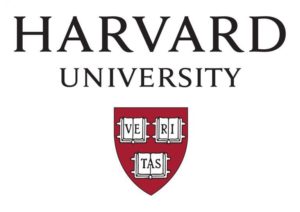9 Most Ethnically Diverse Colleges
Find your perfect college degree
In this article, we will be covering...
Diversity in higher education means allowing underrepresented populations greater access, usually through setting quotas for admission. The traditionally underrepresented populations cover race or ethnicity, sexual identity and gender, and first-generation status, among others.
Ethnically diverse colleges are colleges and universities that foster an environment of inclusiveness and acceptance for individuals of all backgrounds and ethnicities. By providing an atmosphere of acceptance and understanding, these colleges strive to create an educational experience that celebrates cultural and ethnic differences while deepening respect and appreciation for the diverse cultures and experiences present on campus.
Through a combination of intentional outreach, admissions, and support opportunities, ethnically diverse colleges enable students to benefit from a broader range of educational experiences. Colleges strive for diversity in general and ethnic variety in particular because students learn from different perspectives.
FEATURED SCHOOLS
In the case of ethnic diversity in colleges and universities, the term refers to the presence of students with a wide variety of ethnic identities and cultural backgrounds. The students are typically classified as white, black, and Asian, as well as Pacific Islanders, to name a few categories.
By learning from their peers from diverse backgrounds, students can broaden their horizons and enrich their educational experiences. The possible result: More meaningful change in mindsets.

By engaging in meaningful dialogues and exploring unique perspectives, these colleges provide the foundation for an educational experience that more accurately reflects the ever-changing realities in today’s world.
Colleges and Universities with the Most Ethnically Diverse Student Body
- Massachusetts Institute of Technology
- Stanford University
- University of Hawaii at Hilo
- University of Nevada Las Vegas
- Rutgers University Newark
- Harvard University
- Johns Hopkins University
- University of San Francisco
- New York University
Massachusetts Institute of Technology

Diversity is an integral aspect of the student experience at MIT! The MIT Institute Community & Equity Office is dedicated to fostering and celebrating student diversity, and it complements MIT’s use of race in its holistic admissions process. But the race itself isn’t a controlling factor – it’s just one of several factors considered.
MIT’s student body reflects its commitment to diversity, too, with white (28.7%), Asian (19.7%), and Hispanic and Black students making up its majority.
Stanford University

Diversity is a core value at Stanford University since its establishment in 1891. According to its diversity page, Stanford believes that students should have the opportunity to learn from others with diverse perspectives, experiences, and identities.
Students then enjoy a great university education in a vibrant community that affirms the diversity of humanity and their numerous points of connection.
The student body identifies as 31% white while the rest are Asian (19.6%), Hispanic or Latino (11.6%), and a mix of two or more races. Stanford has numerous ethnic clubs like the Black Family Gathering, the Chinese American Association, and the Vietnamese Student Association.
University of Hawaii at Hilo

The melting pot at the University of Hawaii at Hilo consists of white (19.1%), Asian (15.5%), Hispanic/Latino (15.1%), and Native Hawaiian and Pacific Islanders (8.3%).
More than 37% identify themselves as belonging to two or more races. The public university prides itself on its ethnic diversity and its active efforts to promote and celebrate it.
Indeed, its ethnic diversity is among its greatest strengths! Students benefit from the conducive environment for learning from peers in and out of the classroom.
University of Nevada Las Vegas

As a Minority Serving Institution, UNLV has a large population of minority students who qualify for federal financial aid like the Pell Grant.
UNLV is also known as a Hispanic Serving Institution, aside from being home to large populations of Native American, Asian-American, and Pacific Islander students. With more than 50 ethnic, cultural, and religious-based student organizations on campus, it’s more than ready for true diversity.
UNLV is also known for its large population of students who are the first in their families to pursue a college education. More than a third of its students come from this cohort.
Rutgers University Newark

The proof of student diversity at Rutgers University is the abundance of ethnicity-centric student organizations and clubs, as well as the financial aid programs for minority students.
The Asian Student Interest Society, National Association of Black Accountants, Iranian-American Civic Association, Palestinian American Organization, and Indian Students Association are a few examples.
The student body consists of white (25.4%), Hispanic and Latino (24.2%), Asian (16.6%), and Black or African American (2.42%) students. There is also a small percentage of students who identify as two or more races, as well as Native Hawaiin, Pacific Islanders, and American Indians.
Harvard University

The highly selective Ivy League university is known for its active adoption of affirmative action, particularly in its use of race as a “tip” in its holistic admissions process.
With students coming from all 50 states and over 100 foreign countries, its student body is, indeed, among the most ethnically diverse! Harvard believes in the convergence of diverse cultures, backgrounds, and experiences in influencing the student experience including the inevitability of debate and dialogue.
There are over 50 student organizations with cultural and ethnic backgrounds in Harvard that promote ethnic diversity. Harvard is also known for its strong support of the Black Lives Matter movement and its take on anti-Asian violence. The student body consists of white (39.7%), Asian (13.7%), and Hispanic or Latino (9.46%) students, among other ethnicities.
Johns Hopkins University

JHU may have adopted segregation policies during its early years but it has since then become one of the country’s most ethnically diverse universities! The enrolled student population consists of white (41%), Asian (15%), Hispanic/Latino (9.31%), and black (8.11%) students, among other ethnicities.
There’s also the Office of Multicultural Affairs that oversees the numerous cultural organizations for students. The African Student Association, Black Student Union, Caribbean Culture Society, Filipino Student Association, and Iranian Cultural Society are a few examples.
University of San Francisco

The City of San Francisco itself is a hotbed of diversity so it goes to follow that the University of San Francisco is an ethnically diverse institution!
Of the student population, students who identify as Asian (22%), Latino (21%), and African American (7%) contribute to the dynamic campus environment.
USF has Cultural Centers including the Intercultural Center where student clubs and organizations come together as a community. The Cultural Centers also provide a physical space where students can explore shared issues including ethnicity and identity.
New York University

NYU’s Class of 2023 is the most diverse undergraduate class in its history, a testament to its unwavering commitment to diversity. Not a single ethnic group dominates the on-campus scene – no group makes up over 22% of the Class of 2023!
This isn’t surprising as NYU has always prided itself on being “open to all” although it must also be emphasized that it’s among the most selective institutions.
NYU strives for inclusivity and diversity of approaches, perspectives, and points of view. The Office of Equal Opportunity and Center for Multicultural Education and Programs are among its foremost units for this purpose.
What are the advantages of attending an ethnically diverse college?
- Increased Exposure to Different Ideas and Perspectives: An ethnically diverse college provides students with the opportunity to learn from different cultures, backgrounds, and perspectives. This can help broaden their perspectives, build tolerance, and provide an understanding of the world.
- Meaningful Interactions with Different Cultures: By interacting with and learning from peers from different backgrounds, students can gain valuable insight into different cultures and also learn how to work and communicate across cultural and language barriers.
- Increased Openness and Diversity of Ideas: By interacting with a range of different backgrounds, cultures, and perspectives, college students at an ethnically diverse college can become more open-minded and engaged in a variety of ideas and aspects of life they may not have been exposed to before.
- Developing Professional Networks and Future Opportunities: An ethnically diverse college provides students with wider access to job opportunities, internships, and various other professional contacts and networks. This can provide valuable networking opportunities and help open doors to potential jobs.
- Increased Understanding of Global Issues: By attending an ethnically diverse college, students can gain a deeper understanding of global issues, such as immigration and refugee rights, and learn how to be sympathetic to people from different backgrounds and societies.
Additional Information:


